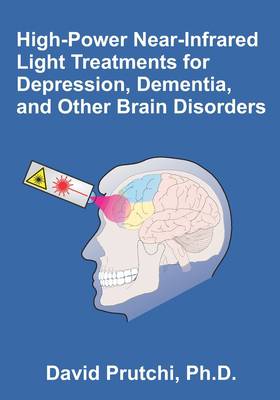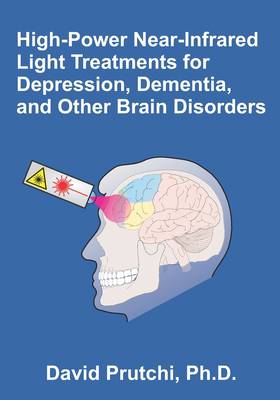
- Afhalen na 1 uur in een winkel met voorraad
- Gratis thuislevering in België vanaf € 30
- Ruim aanbod met 7 miljoen producten
- Afhalen na 1 uur in een winkel met voorraad
- Gratis thuislevering in België vanaf € 30
- Ruim aanbod met 7 miljoen producten
Zoeken
High-Power Near-Infrared Light Treatments for Depression, Dementia, and Other Brain Disorders
David Prutchi
Paperback | Engels
€ 32,45
+ 64 punten
Omschrijving
Light of specific wavelengths and intensities has been shown to repair and protect neurons from damage, opening the possibility of using near-infrared light as a non-invasive treatment of various brain and psychiatric disorders. This book serves as a practical overview of the scientific fundamentals, technical implementation, and therapeutic applications of transcranial photobiomodulation:
- Part I provides an accessible explanation of why the irradiation must be done in the near-infrared region of the light spectrum. It presents evidence-based background on the parameters of light important to photobiomodulation, and describes the effects of near-infrared light on cells and tissues.
- Part II discusses the types of multi-Watt light sources required to non-invasively deliver therapeutic doses of infrared light to the brain. Importantly, this part describes in detail various High-Power Near-Infrared Transcranial Therapy (HIPNITT) medical devices that have been used in clinical trials.
- Part III presents the potential and challenges of using near-infrared light in the treatment of various brain disorders such as depression, dementia, traumatic brain injury, and Parkinson's disease.
Specificaties
Betrokkenen
- Auteur(s):
- Uitgeverij:
Inhoud
- Aantal bladzijden:
- 122
- Taal:
- Engels
Eigenschappen
- Productcode (EAN):
- 9798522150181
- Verschijningsdatum:
- 20/07/2021
- Uitvoering:
- Paperback
- Formaat:
- Trade paperback (VS)
- Afmetingen:
- 178 mm x 254 mm
- Gewicht:
- 308 g

Alleen bij Standaard Boekhandel
+ 64 punten op je klantenkaart van Standaard Boekhandel
Beoordelingen
We publiceren alleen reviews die voldoen aan de voorwaarden voor reviews. Bekijk onze voorwaarden voor reviews.











